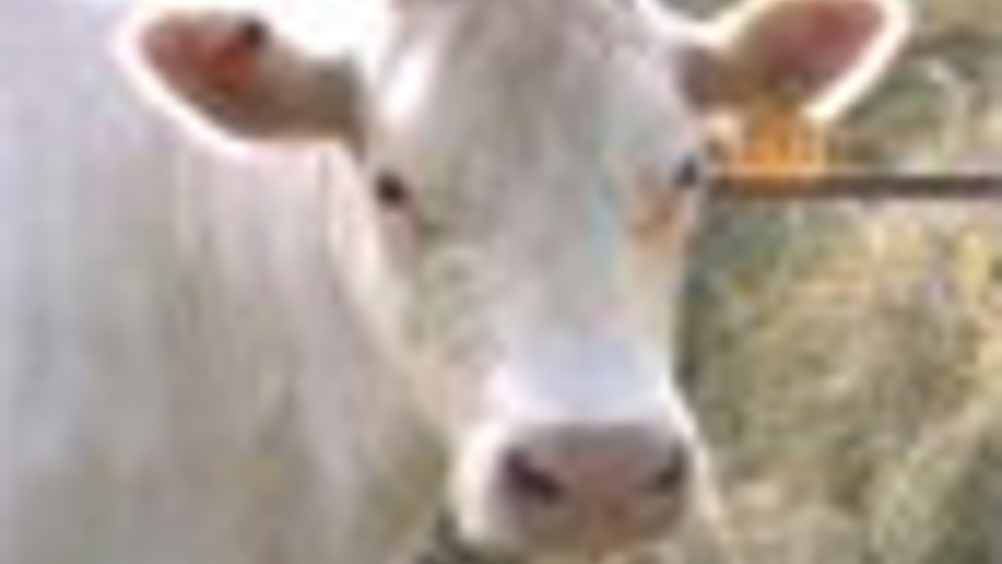Bovine breathalyser

A breathalyser for livestock is being developed to detect foot and mouth, the virus that ravaged UK farming in 2001.
Optical sensors to reveal the presence of the extremely infectious virus in air samples are being perfected by a consortium that includes Cambridge University, Biral of Bristol, Chelsea Technologies of West Molesey, Surrey, and Stratophase of Romsey, Hampshire.
The team of academics and industry experts recently received funding of £1m for the project, half of which came from the government.
The seven-month epidemic in 2001 cost the economy more than £8bn and led to the slaughter of more than six million sheep and cattle. Much of the countryside came to a standstill and many businesses went under.
Foot and mouth can spread widely and quickly because as few as 10 virus particles can cause the disease in livestock. Pigs in particular can breathe out significant quantities and it has been known for the particles to be carried on the wind for many miles.
Spotting the symptoms early is key to controlling the spread of the disease, but at present it is not easy to do. Symptoms may not appear for up to 14 days after infection and the problem is exacerbated by carriers that may not display any symptoms even though they will still be shedding the virus.
Identifying the symptoms in sheep is particularly hard and, to check the health of livestock, vets may have to swab lesions, which increases the risk of spreading the disease themselves.
So a simple, portable breathalyser test could help spot infected animals when there are no obvious symptoms and help to prevent the disease from spreading.
'We're trying to make a device that collects pathogens from the air and puts them into a liquid stream which flows over our optical detectors,' said Dr Richard Williams, chief executive of Stratophase.
Antibodies on the detectors will reveal the presence of the virus in the sample. 'It's much quicker to have a hand-held device that sniffs the air than to swab the animals.'
The breathalyser project began this month and is being funded by the Technology Strategy Board for two years. It follows a £565,000 project just completed by Stratophase, working with Southampton University Optoelectronics Research Centre, Davin Optronics of Watford and Smart Fibres of Bracknell.
Together they produced a low-cost biological and chemical multi-wavelength sensor system for detecting biological materials that bind to a coated surface, and the measurement of liquid properties. They achieved their aim of commercialising grating-based refractive index sensing.
Stratophase's SpectroSens sensor chip surfaces are coated with antibodies designed to attract specific antigens. When one sticks to the surface, a slight change in the colour of reflected light occurs, enabling the sensor to detect a target agent. An optical fibre takes the signal to a read-out unit (The Engineer, 12 December 2006).
Initially developed for counter-bioterrorism applications, the technology is also well suited to pharmaceutical manufact uring, food and beverage manufacturing, industrial process control and drug discovery applications.
Dr Greg Emmerson, project leader from Stratophase, said: 'For operation in hostile environments, the optical-based system produced by the consortium has significant advantages over traditional systems, whether dealing with flammable liquids or unstable temperatures. Using this technique, high accuracy refractive index measurements, traditionally restricted to controlled laboratory conditions, can be taken out into the field.'
Prof Ralph Tatam of Cranfield University monitored the project on behalf of the Technology Strategy Board. 'This has been a highly successful project. To see a technology successfully emerge from an academic idea and turned into a full product is the ideal outcome [for a Technology Strategy Board project]' he said.
Williams claimed the system has several advantages over competing commercial measurement and detection products, notably its durability, sensitivity and versatility.
While Stratophase sensors are already in use in a handful of labs, the company expects to expand as its technology is refined and applied in different sectors.
It is a member of a consortium that has won an MoD contract to develop a compact and fully-automated biological agent identification system.
The Portable Integrated Battlespace Biological Detection Technology project builds on research already undertaken by the MoD's scientific research centre at Porton Down. A demonstrator is due to be delivered within two years.
Max Glaskin
Register now to continue reading
Thanks for visiting The Engineer. You’ve now reached your monthly limit of news stories. Register for free to unlock unlimited access to all of our news coverage, as well as premium content including opinion, in-depth features and special reports.
Benefits of registering
-
In-depth insights and coverage of key emerging trends
-
Unrestricted access to special reports throughout the year
-
Daily technology news delivered straight to your inbox










Water Sector Talent Exodus Could Cripple The Sector
Maybe if things are essential for the running of a country and we want to pay a fair price we should be running these utilities on a not for profit...